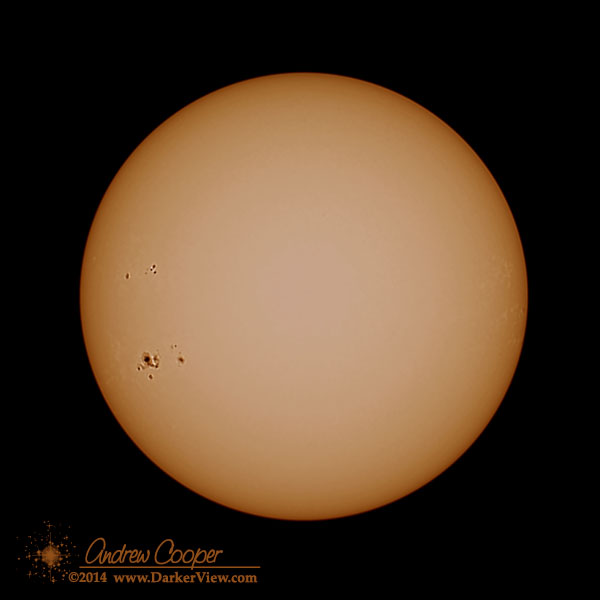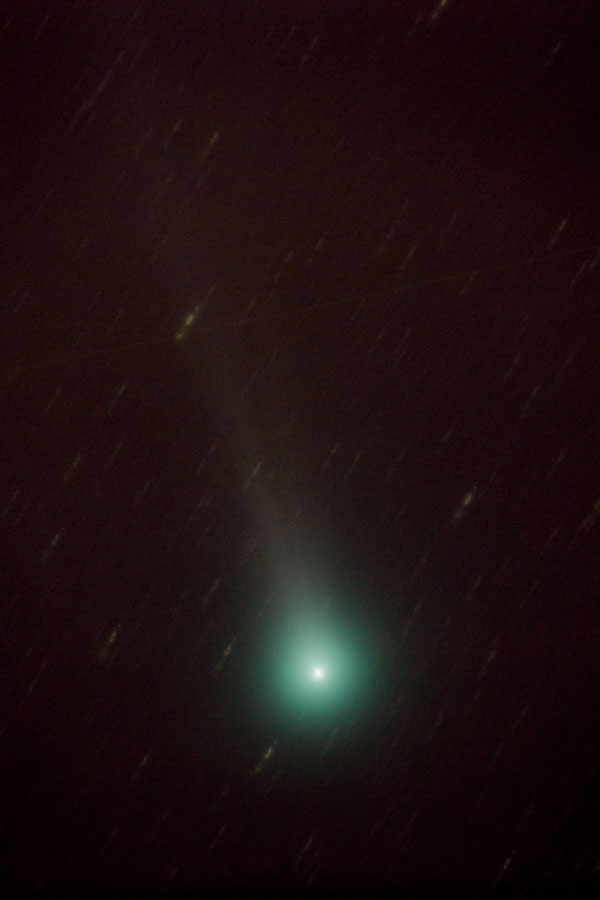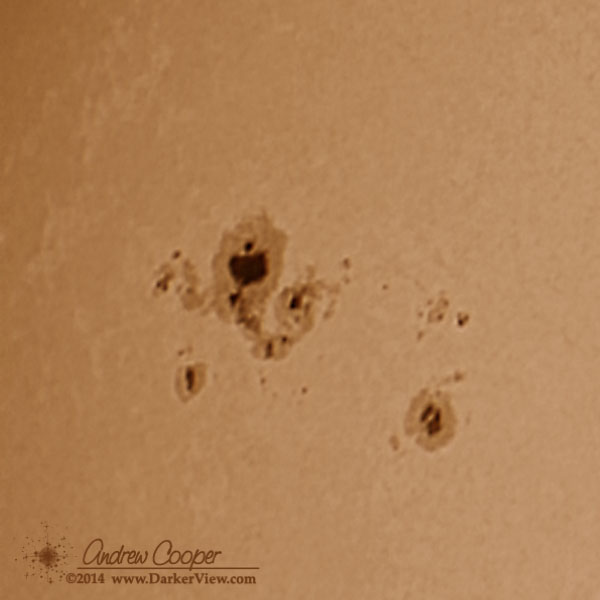
Tag: AT6RC
Postcard from the Universe – M82 with SN2014J
The brightest nearby supernova in may years is currently visible in the bright galaxy M82. I did want to photograph the supernova before it fades much more. It apparently reached a maximum brightness of magnitude 10.5 a few days ago and is starting to dim. But has so far only slid a few tenths of a magnitude.
So I tried to photograph a supernova, and Murphy came to visit.
The last week has seen me dealing with a sinus infection, which combined with terrible weather has kept me from setting up in the driveway for photography. Taking advantage of a few clear hours last night I did make an attempt. Things continued to go wrong.
A high thin haze would not go away, lit up by the light of a bright quarter moon it created high background and gradients in the imagery that would not calibrate out. I forgot to install the LPS filter, meaning that the low pressure sodium lighting of the village compounded the moonlight in creating a poor signal to noise and bad gradients. The autoguider would not behave. This was eventually solved by adjusting the tuning parameters in PHD guide. Not before ruining most of my exposures, I ended up throwing out 24 of 32 exposures. When I did get everything figured out and corrected, and the Moon had fianlly set, the clouds rolled back in.
The final eight usable exposures did result in a somewhat acceptable final product. It could have been so much better…

Sunspot Complex AR1967
Sunspots – Take 2
Another process run on the sunspot image I posted earlier, a stack of 800 out of 1200 frames, with notably better detail. The large complex is AR1967 just rotating into view. This spot has already spawned an M-class flare and more is likely. Forecasters have given the chances of more M-class flares at 60% with the chance of an X-class flare at 10%.

Postcard from the Universe – C/2013 R1 Lovejoy
I had set the alarm clock for 0230 to get up with plenty of time to setup and take comet photos. What greeted me was a sheet of cloud, an all to familiar sight lately. I did not reset the alarm and went back to sleep. A couple hours later I found myself lying awake again, realizing I would probably not fall back to sleep I got up to look outside. To my surprise Orion shown brightly over the street.
Is there enough time to setup and shoot before dawn?
I rushed the alignment, hoping to setup in less than half an hour. Things did not go smoothly… The EOS utility in the computer did not recognize the 6D, I need to update the drivers. A thin cloud stubbornly sat in front of Polaris, I think I got the polar alignment, the star was very dim on the polar ‘scope. Even when exposures seemed to be going smoothly I they were not. I find out later the auto-guider had moved itself to a hot pixel, probably when a bit of cloud passed through. In the rush I did not get a dark frame for the guider, most of the frames show small guide errors.
One not so bad bit of serendipity… The Hubble Space Telescope went right through one of the frames.
Despite all I did get an image of the comet. It should have been better, rushing astrophotography is not a good plan…

Waxing Moon
Omega Centauri

Postcard from the Universe – NGC1365 and Supernova 2012fr
A photo taken from my driveway of NGC1365 and supernova 2012fr. It is a bright supernova in a classic barred spiral galaxy. I had observed NGC1365 in mid-October with the 18″, noting the beautiful spiral structure. The supernova appeared about two weeks later. I have since observed it in a couple telescopes, including Cliff’s 24″.
The nova seems to be fading now, it peaked around 12th magnitude in November. Currently about 14.5 magnitude, but still easy with the AT6RC and Canon 20Da camera.

Postcard from the Universe – Orion Nebula with the EOS-M
The first astrophoto taken with the EOS-M. Considering the trouble it is to manually trigger the exposures without proper camera control, I am surprised I stuck it out to take 40+ subs. Since 30 seconds was the longest I could program the camera for I simply maxed out the ISO and took a lot of subs plus a dozen darks. There is still way too much noise in the resulting frame. Still, the ISO 12,800 frames are not all that bad, better than I expected. If this camera had remote control it would be a decent little astro camera. Longer subs and a lower ISO would deliver decent results.




